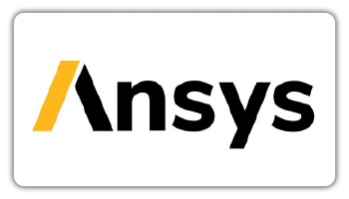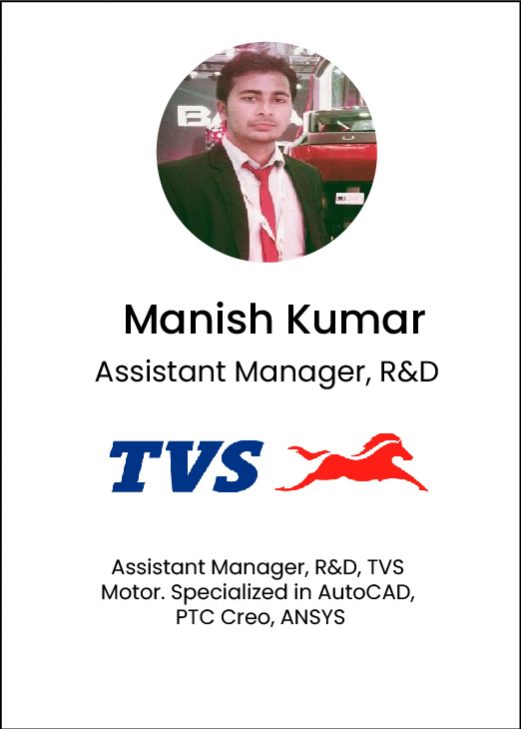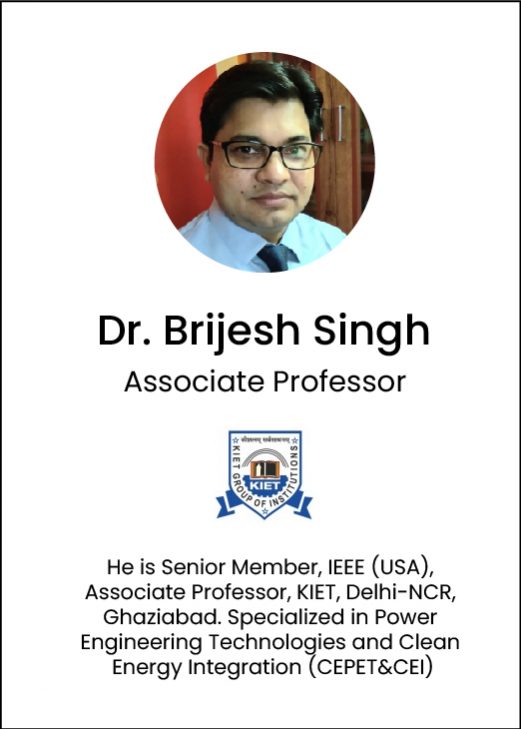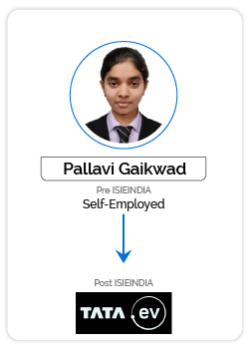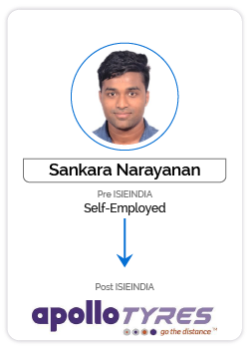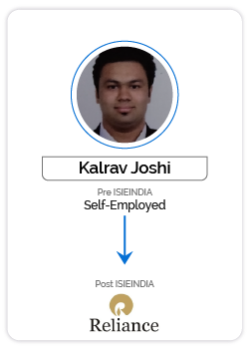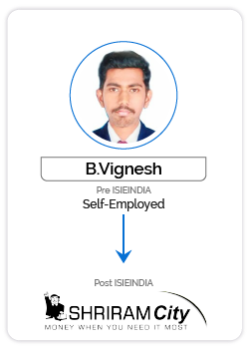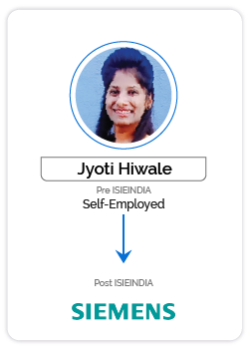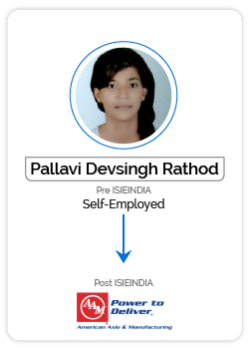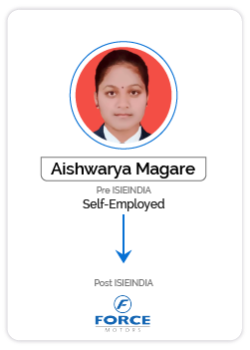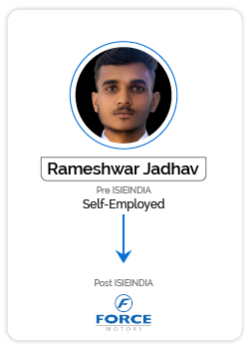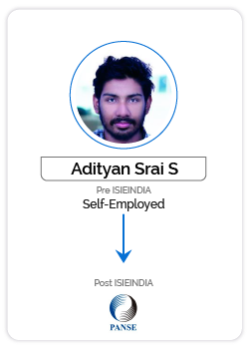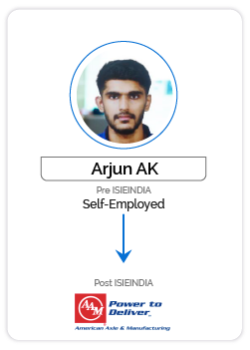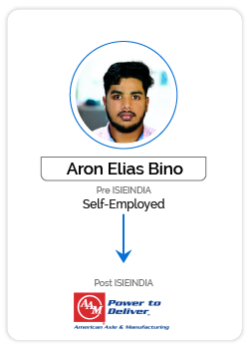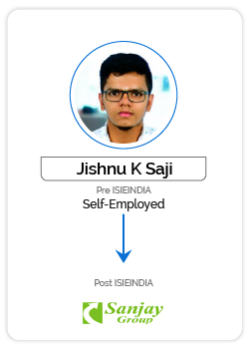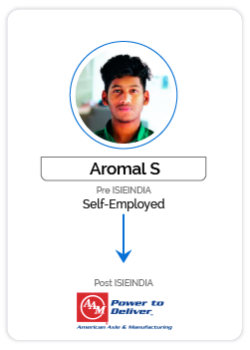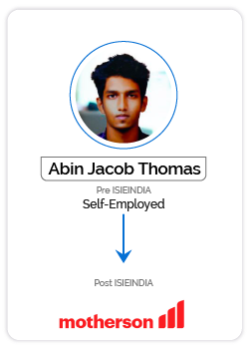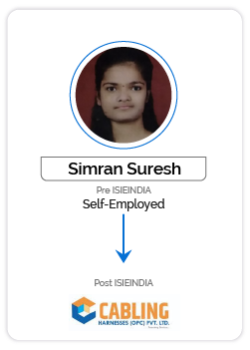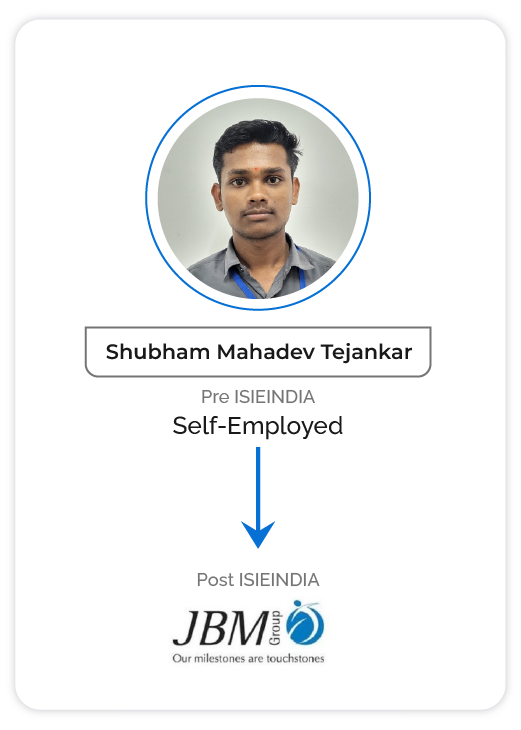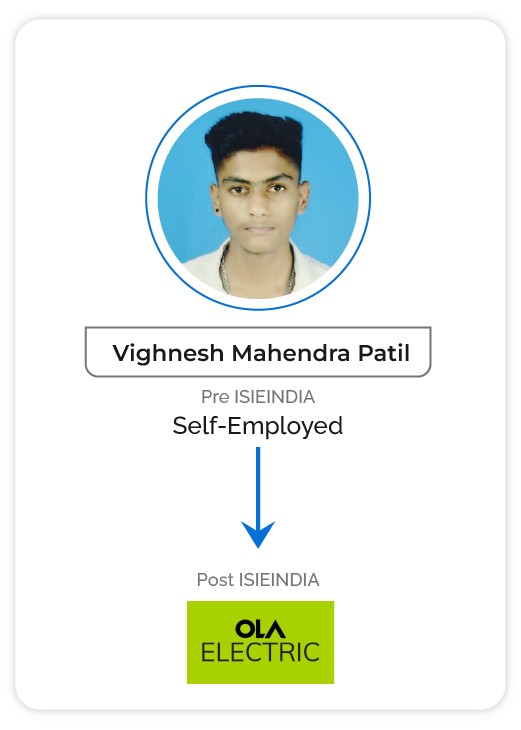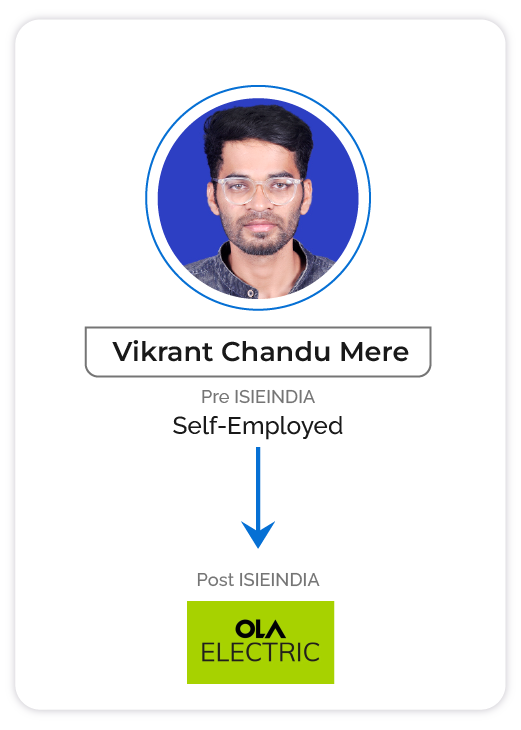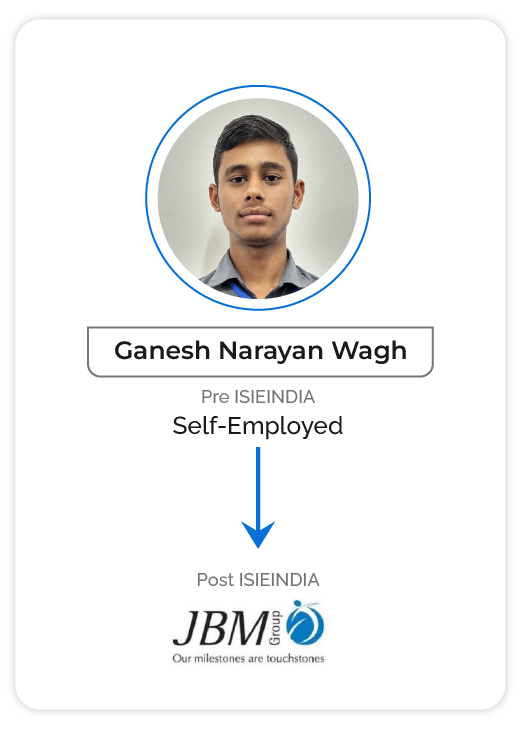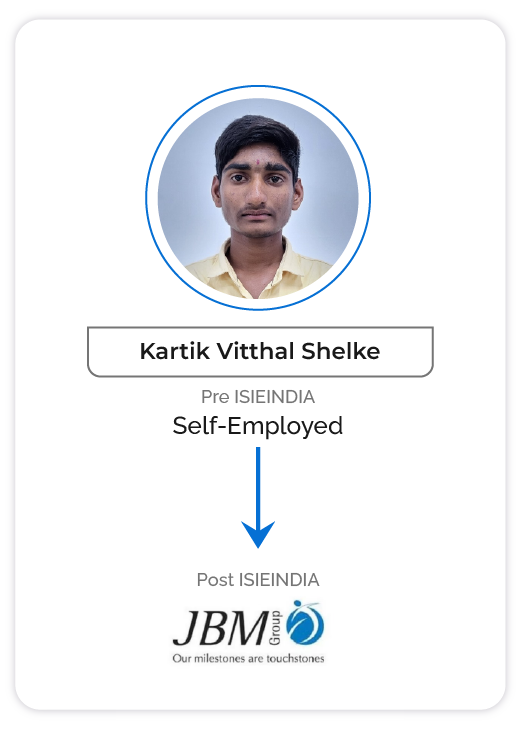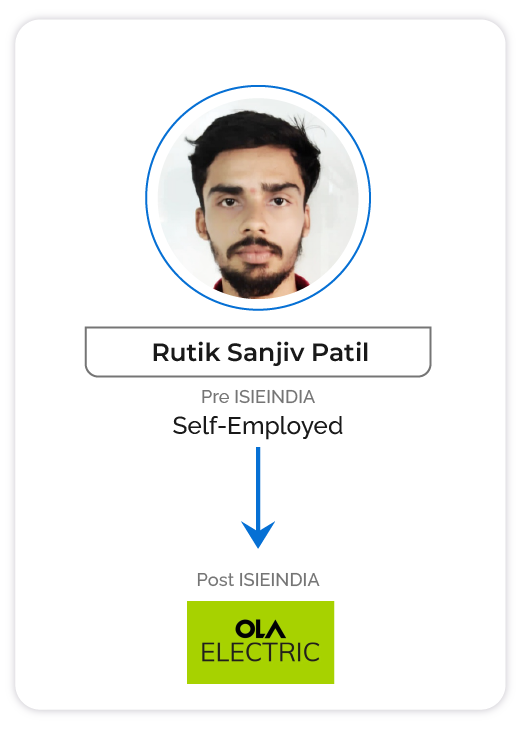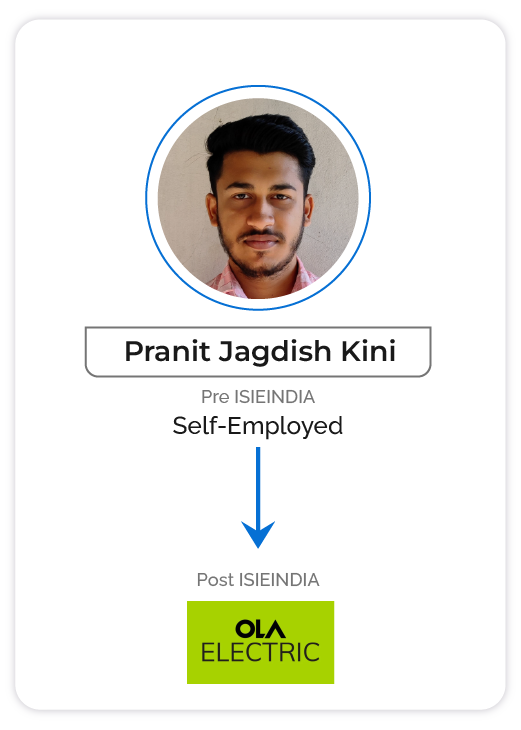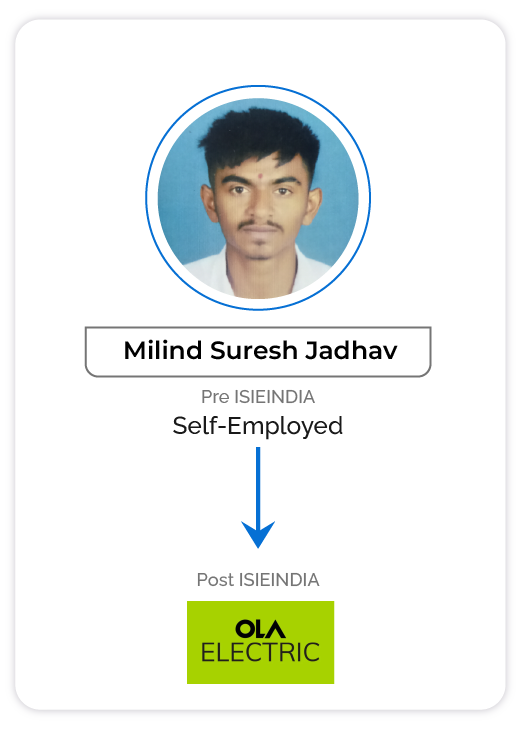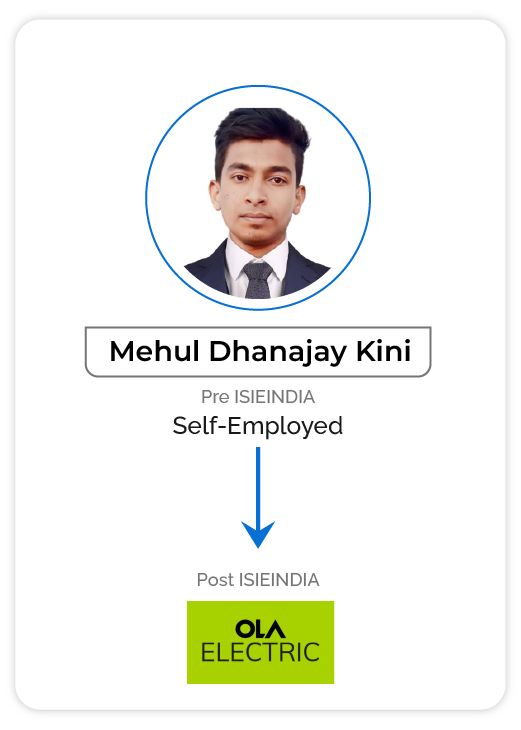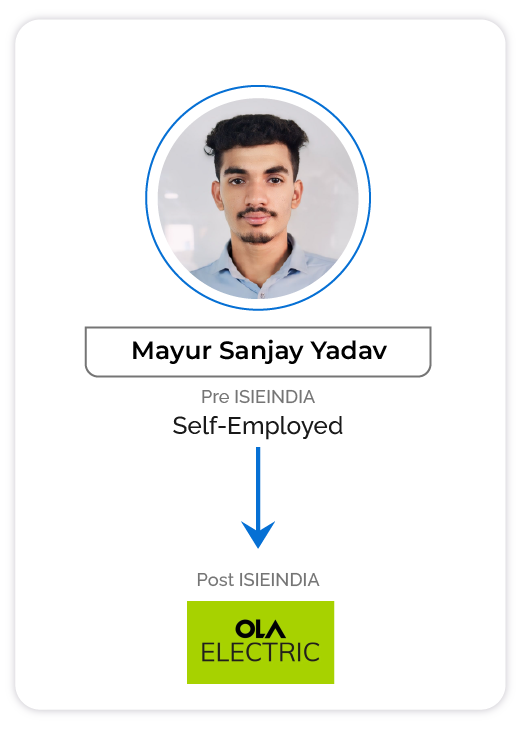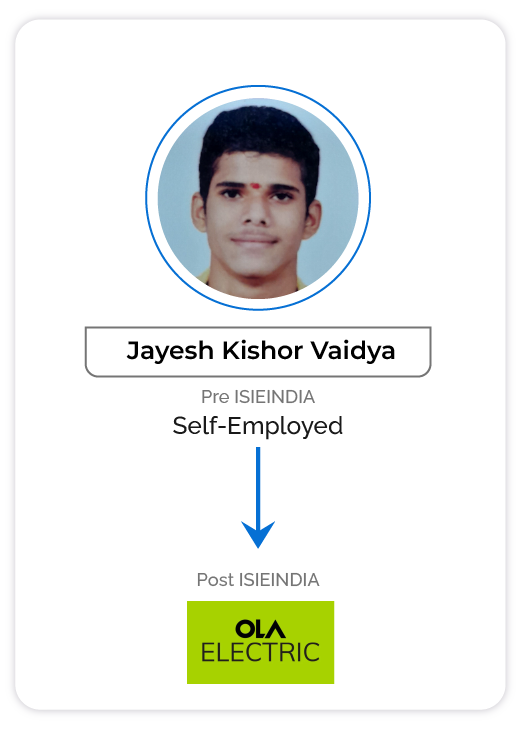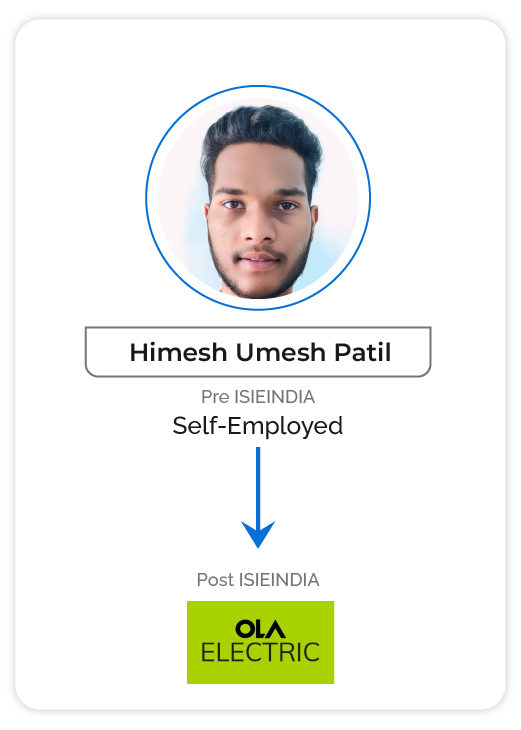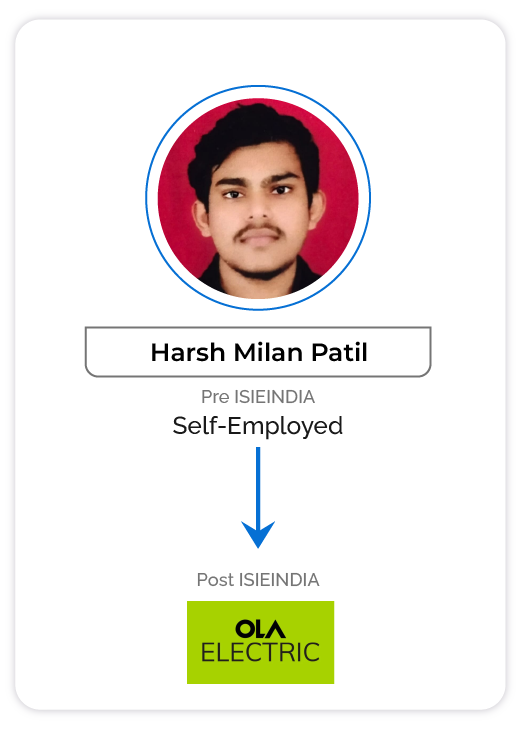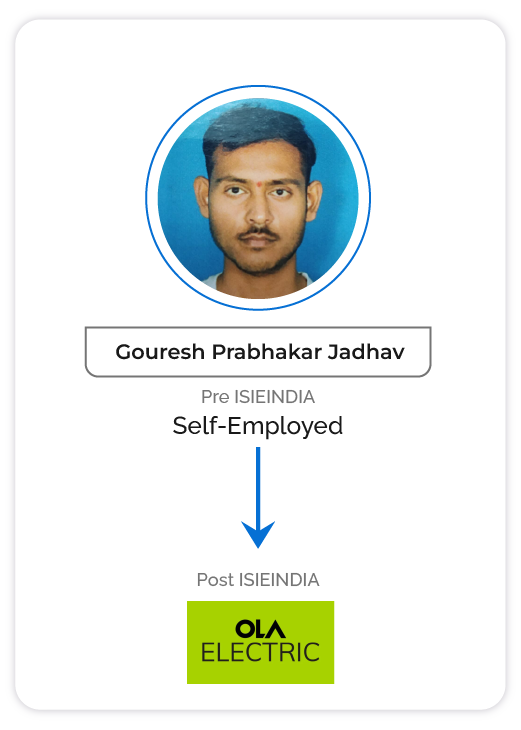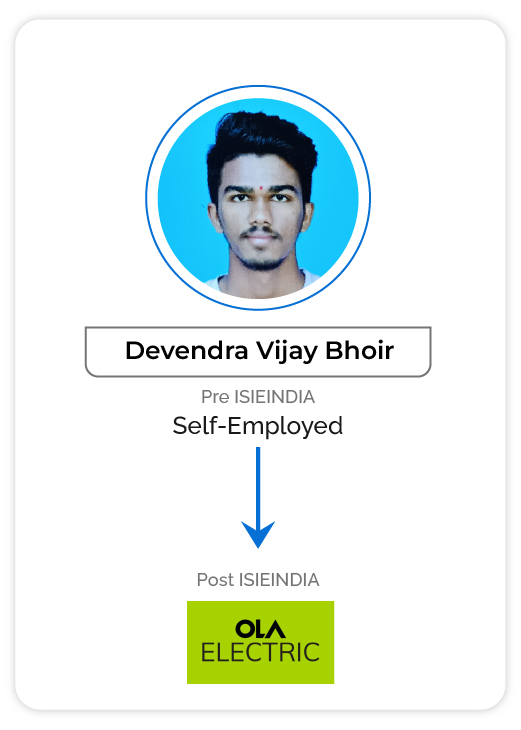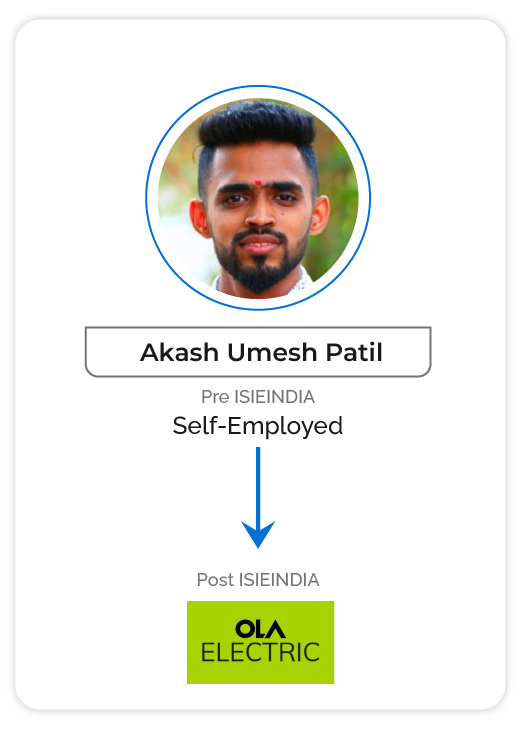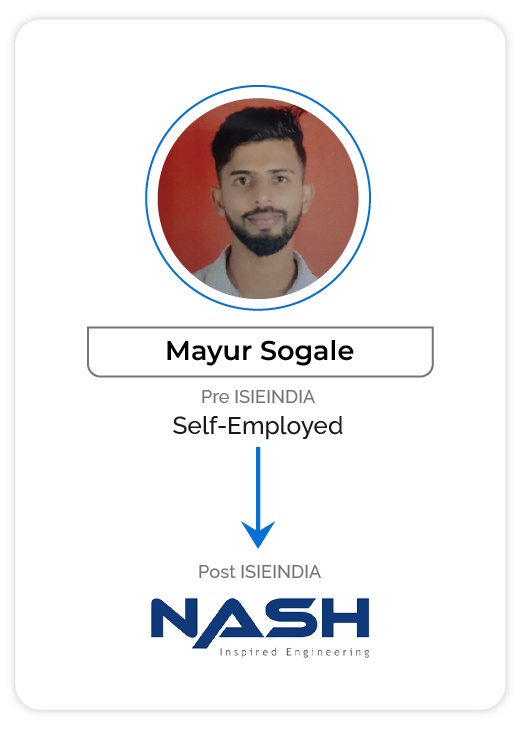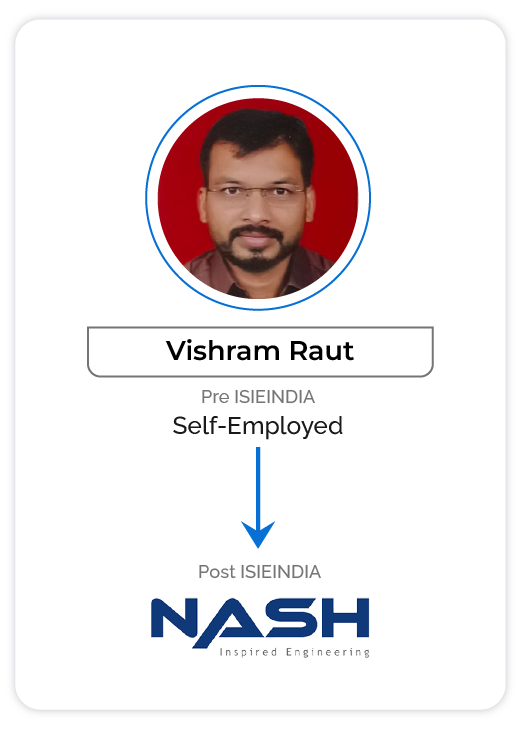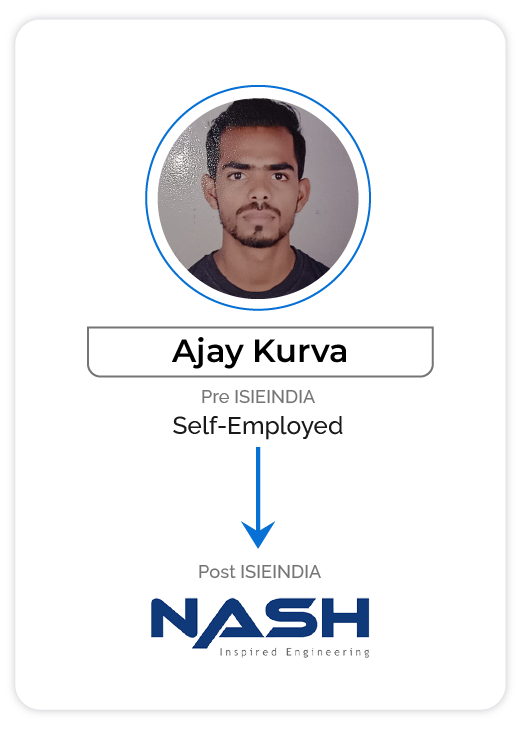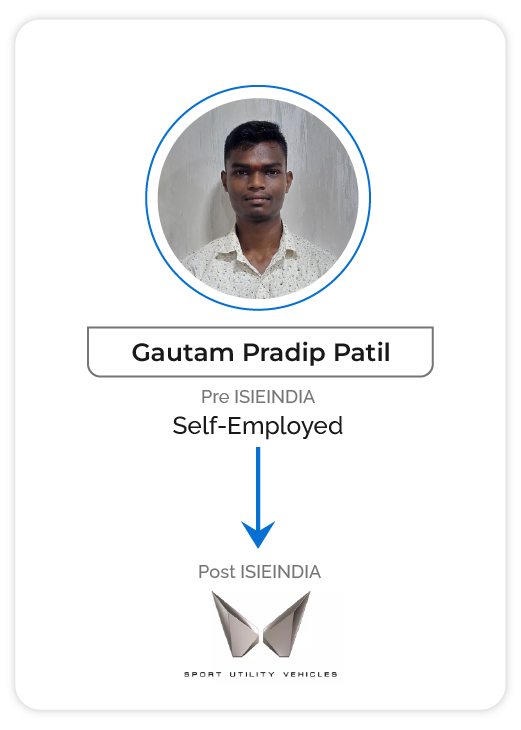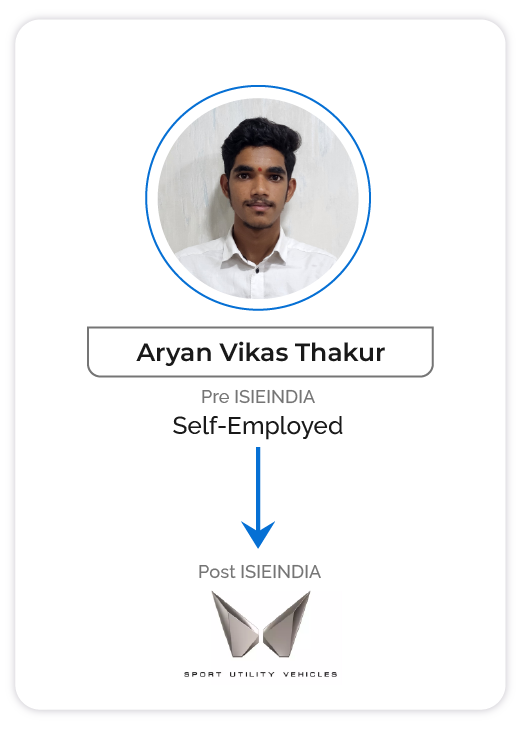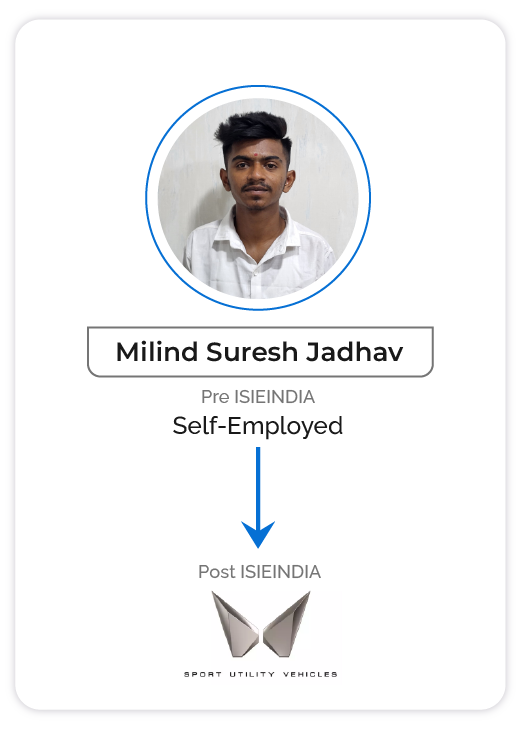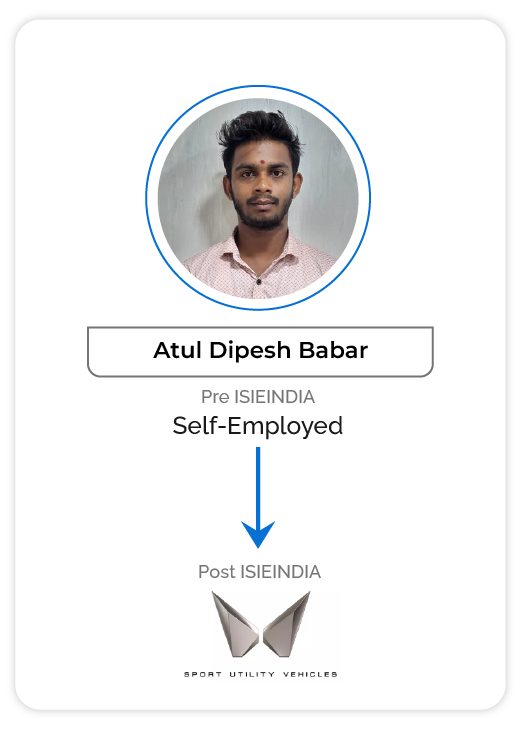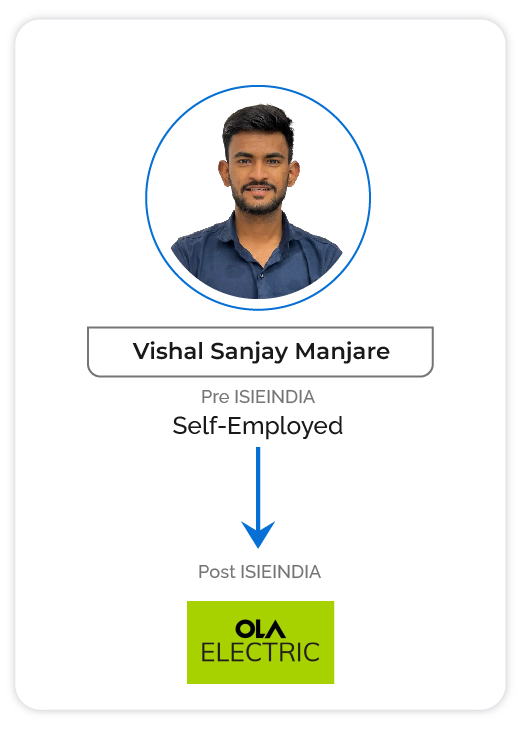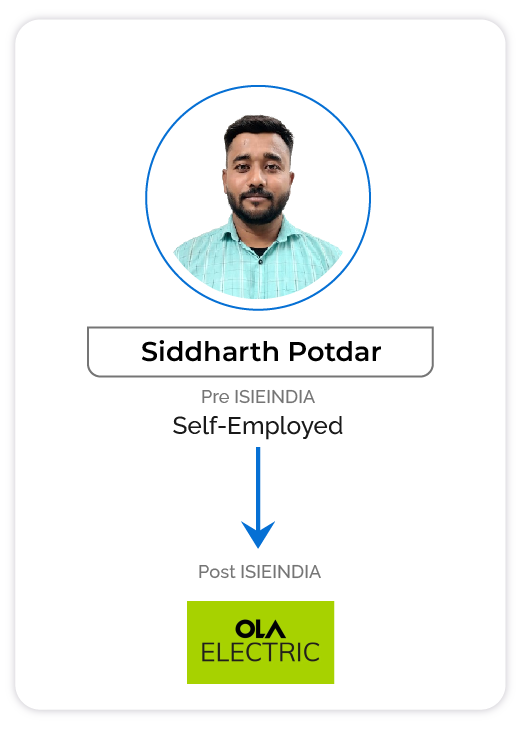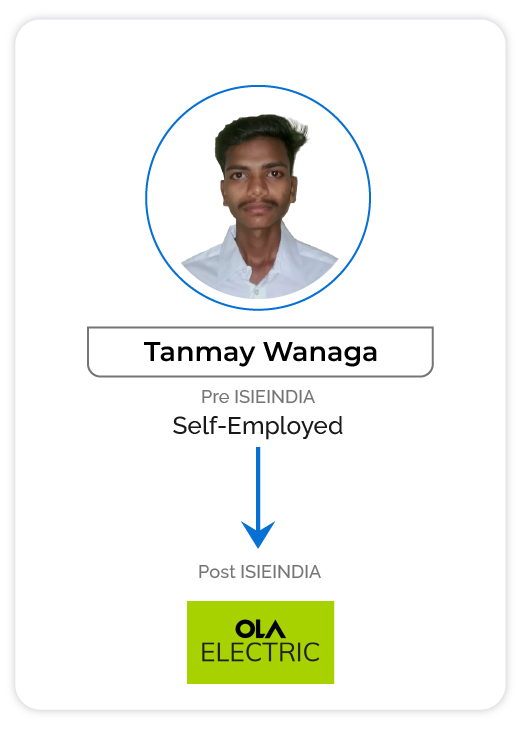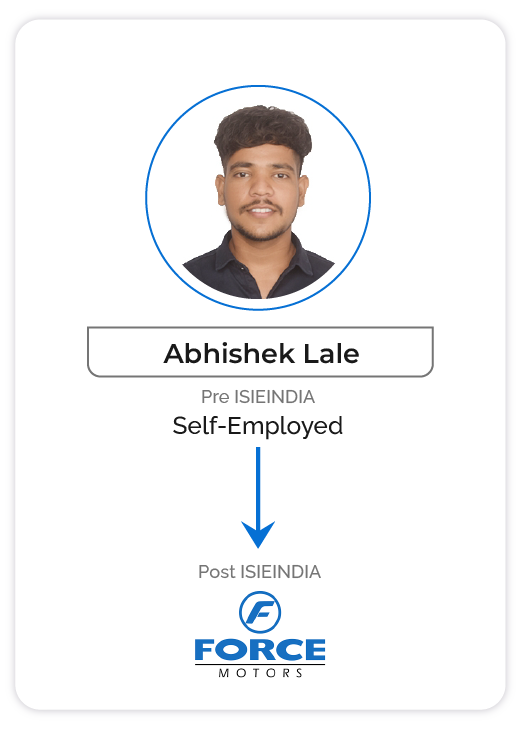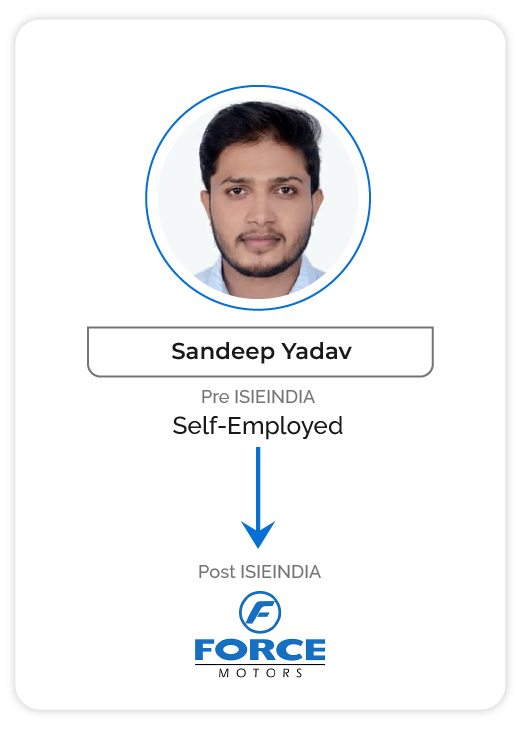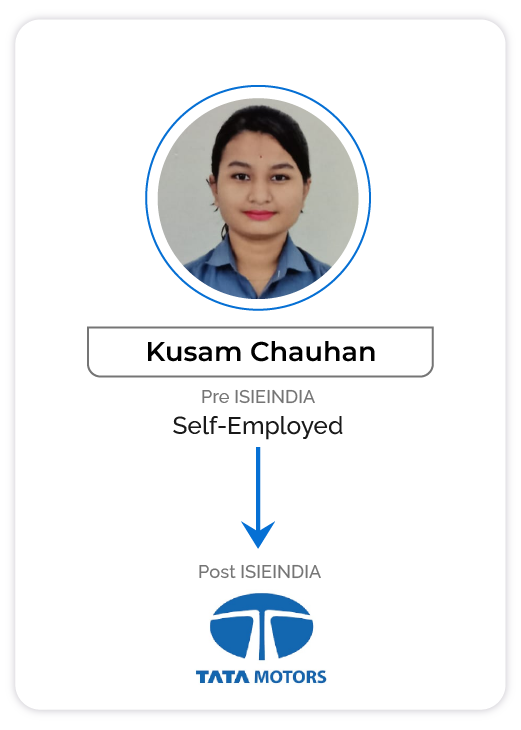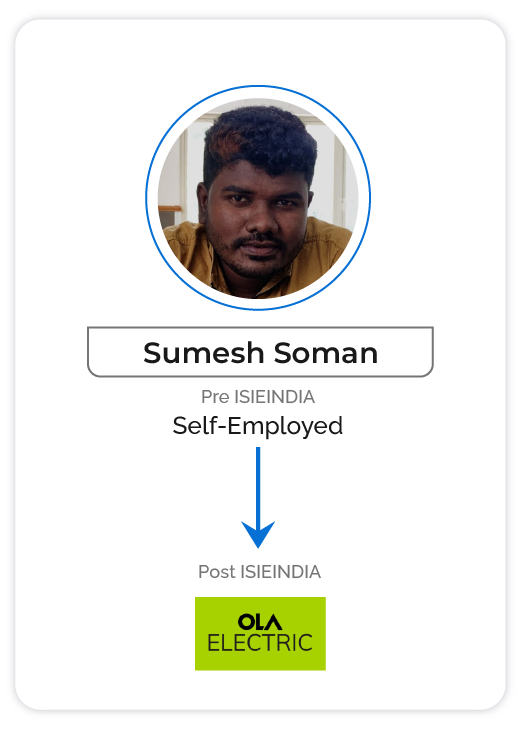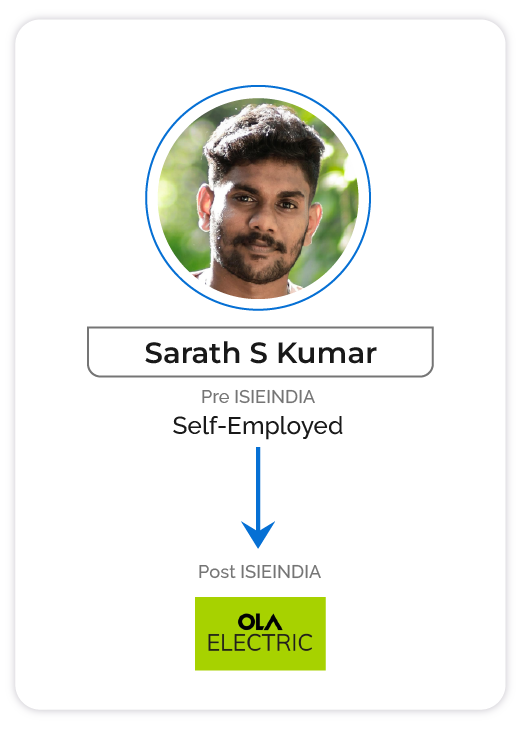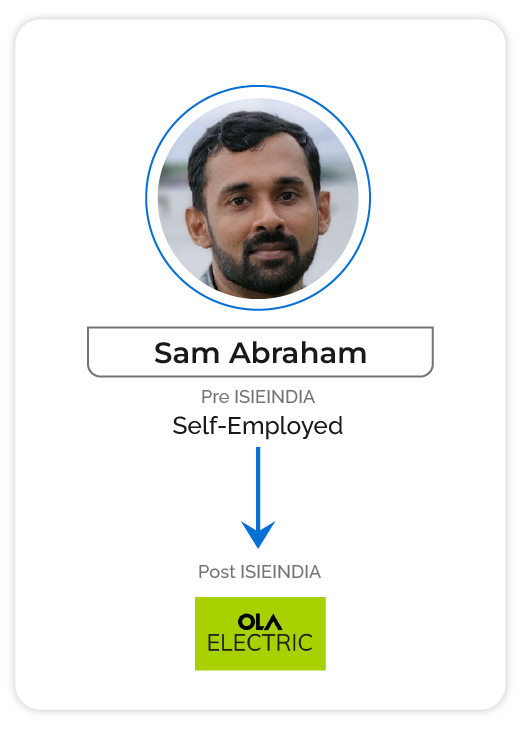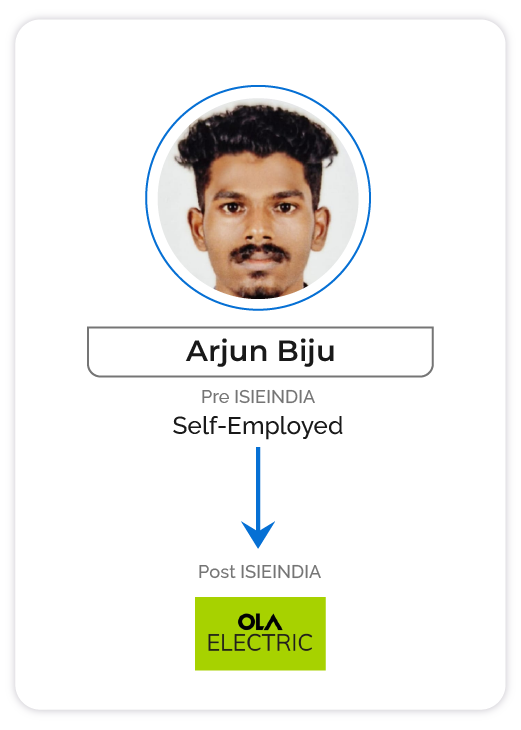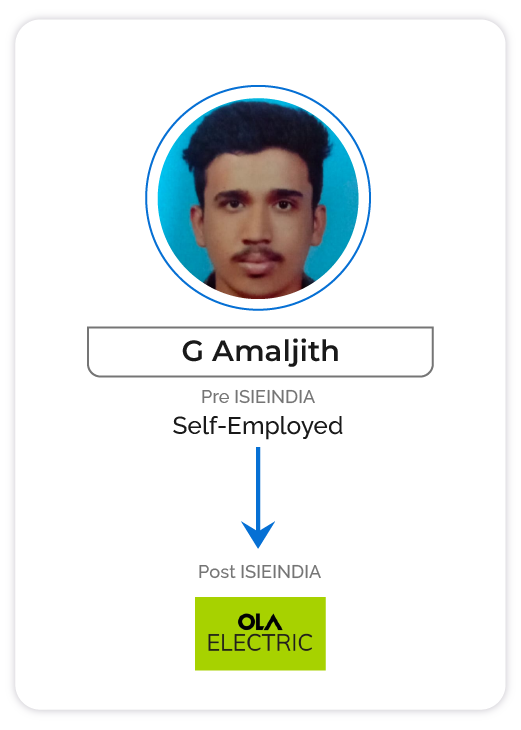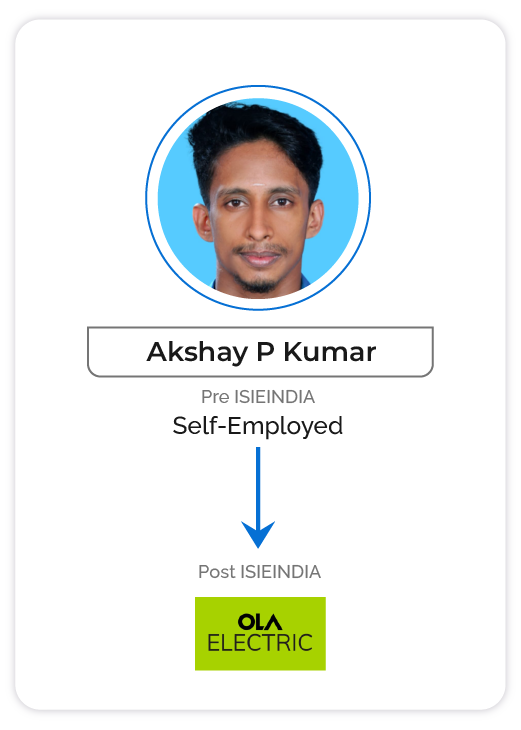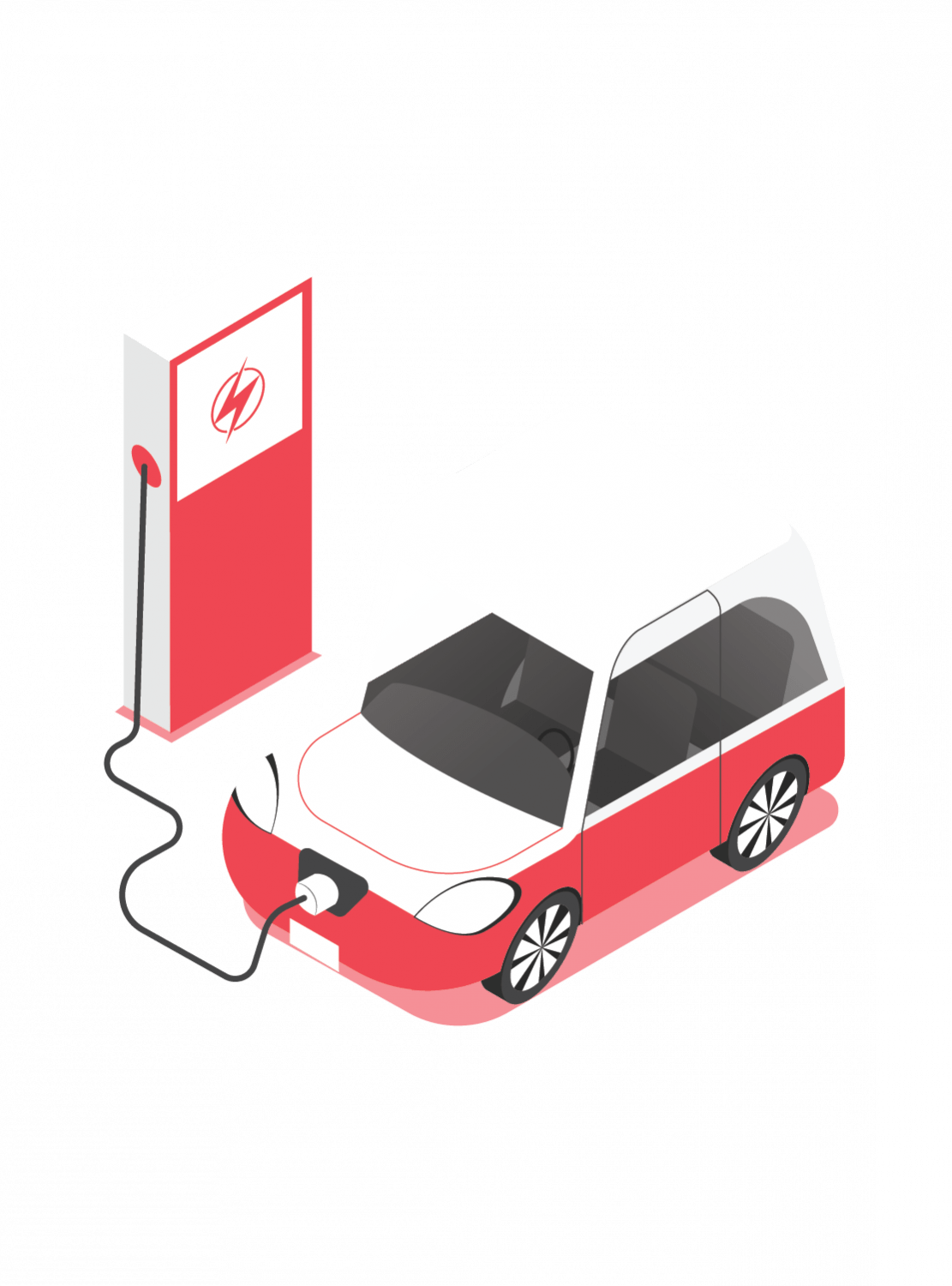Executive PG Program in Electric Vehicle Technology
Accelerate your career with our PG Program in Electric Vehicles, tailored for working professionals. Gain expertise in ADAS, Embedded Systems, Battery Design, and Charging Infrastructure, etc. Master cutting-edge technologies shaping the future of electric mobility in just one comprehensive program.

Eligibility: Minimum 1 Year of Experience
Book a Class, for Free
What does this course have to offer?
Key Highlights
![]() Self Paced Course + Weekly Live Query Sessions for 04 Months (Basic Course)
Self Paced Course + Weekly Live Query Sessions for 04 Months (Basic Course)
![]() Live Mentorship and Project Based Training on Specialization Selected
Live Mentorship and Project Based Training on Specialization Selected
![]() Course Specially Curated for working professionals
Course Specially Curated for working professionals
![]() No cost EMI available
No cost EMI available
![]() Career Support by ISIEINDIA
Career Support by ISIEINDIA
![]() Live Projects
Live Projects
![]() 1:1 Interview Preparation
1:1 Interview Preparation
![]() Industry Oriented Projects
Industry Oriented Projects
![]() One-on-One interaction with mentors
One-on-One interaction with mentors
![]() Learn from Industry Experts
Learn from Industry Experts
![]() 2 Weeks Free Hands on Training at our Centre of Excellence
2 Weeks Free Hands on Training at our Centre of Excellence
Find the right specialisation for your career aspirations. Choose from electives like:
![]() Controller Area Network (CAN) and ADAS
Controller Area Network (CAN) and ADAS
![]() Motor Modelling & Battery Pack Designing
Motor Modelling & Battery Pack Designing
![]() Battery Pack Designing and BMS Modelling on Software
Battery Pack Designing and BMS Modelling on Software
![]() AI, IOT and Embedded System In Electric Vehicle
AI, IOT and Embedded System In Electric Vehicle
![]() EV Designing on Solidworks and Ansys
EV Designing on Solidworks and Ansys
![]() EV Crashworthiness and Its Analysis
EV Crashworthiness and Its Analysis
![]() Aerodynamics of Vehicle and BIW using CATIA
Aerodynamics of Vehicle and BIW using CATIA
![]() Electric Vehicle High Voltage Safety Training
Electric Vehicle High Voltage Safety Training

Live + Online Classes
Learn through online lectures delivered by our Top Ranked Faculty (after working hours)

08 Specializations
Become future ready by applying what you will learn and built your career.

ISIEINDIA Certificate
Earn a Executive PG Certificate in Electric Vehicle from ISIEINDIA - Ranked #1 in Education.

Placement Assistances
Get ahead in your career with our online, state of the art, placement assistances program.
What our learners have achieved?

350+
Participating Companies

6.9 LPA
Average CTC

30 LPA
Highest CTC

500+
Career Transitions
Top Recruiters
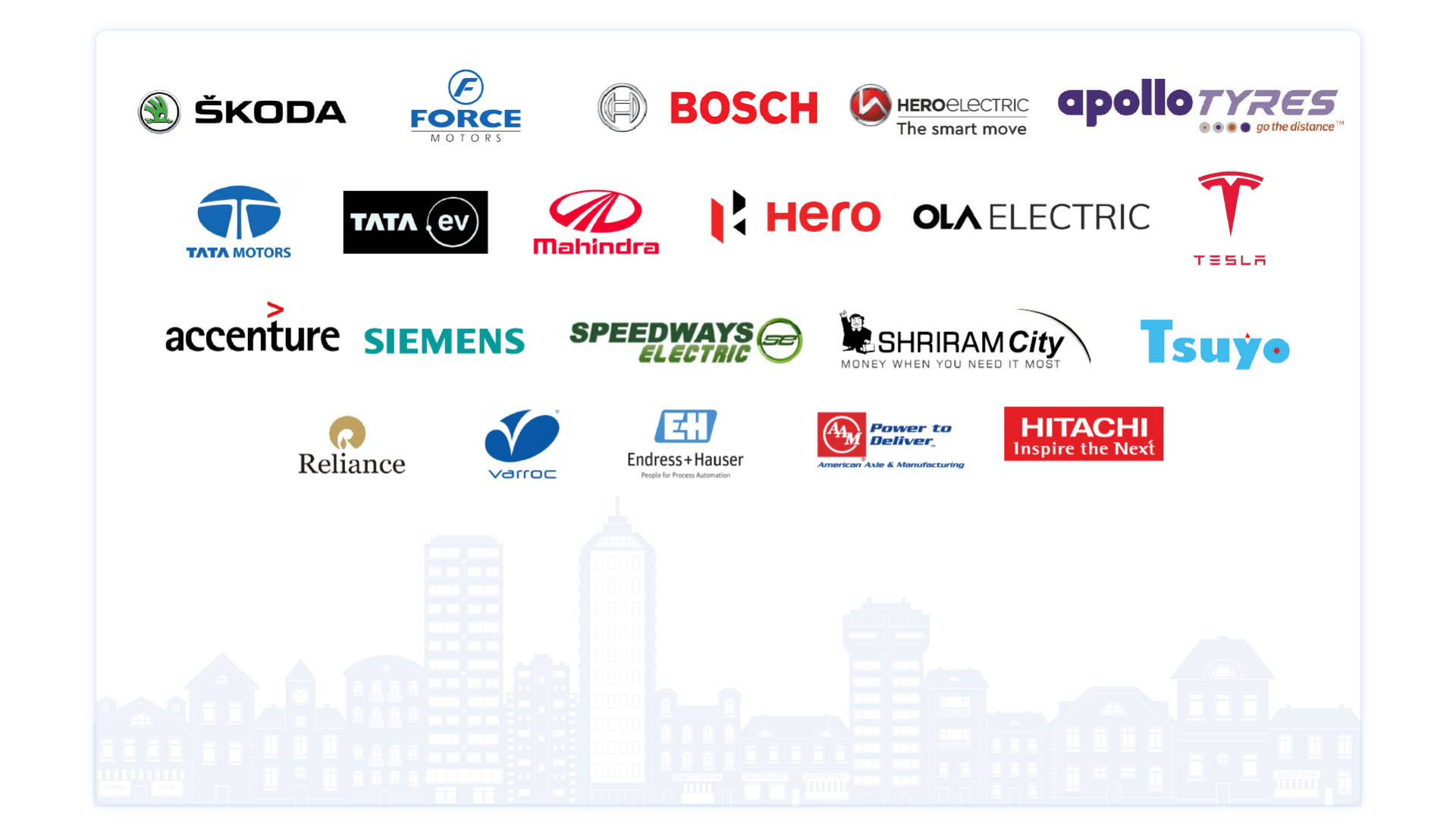
Brochure
Best-in-class content by leading faculty and industry leaders in the form of videos, cases and projects
Join the Electric Vehicle industry
By 2026, IDC predicts Electric Vehicle and cognitive computing spending will reach $52.2 billion. Electric Vehicle is one of the hottest professions.

36%
Annual Job Growth By 2026

50 M
Expected New Jobs By 2030

Rs. 3.5L - 12L
Average Annual Salary
Source: IESA Report
Source: IVCA-EY-Induslaw Report
Source: Glassdoor
Still have Questions?
Talk to our Experts…
Executive PG Program in Electric Vehicle Technology
Certified by NSDC
Complete all the courses successfully to obtain the certification from NSDC, supported by SMEV
• Earn a PG Degree in EV Engineering
• Widely recognized and valued programmed in EV Engineering
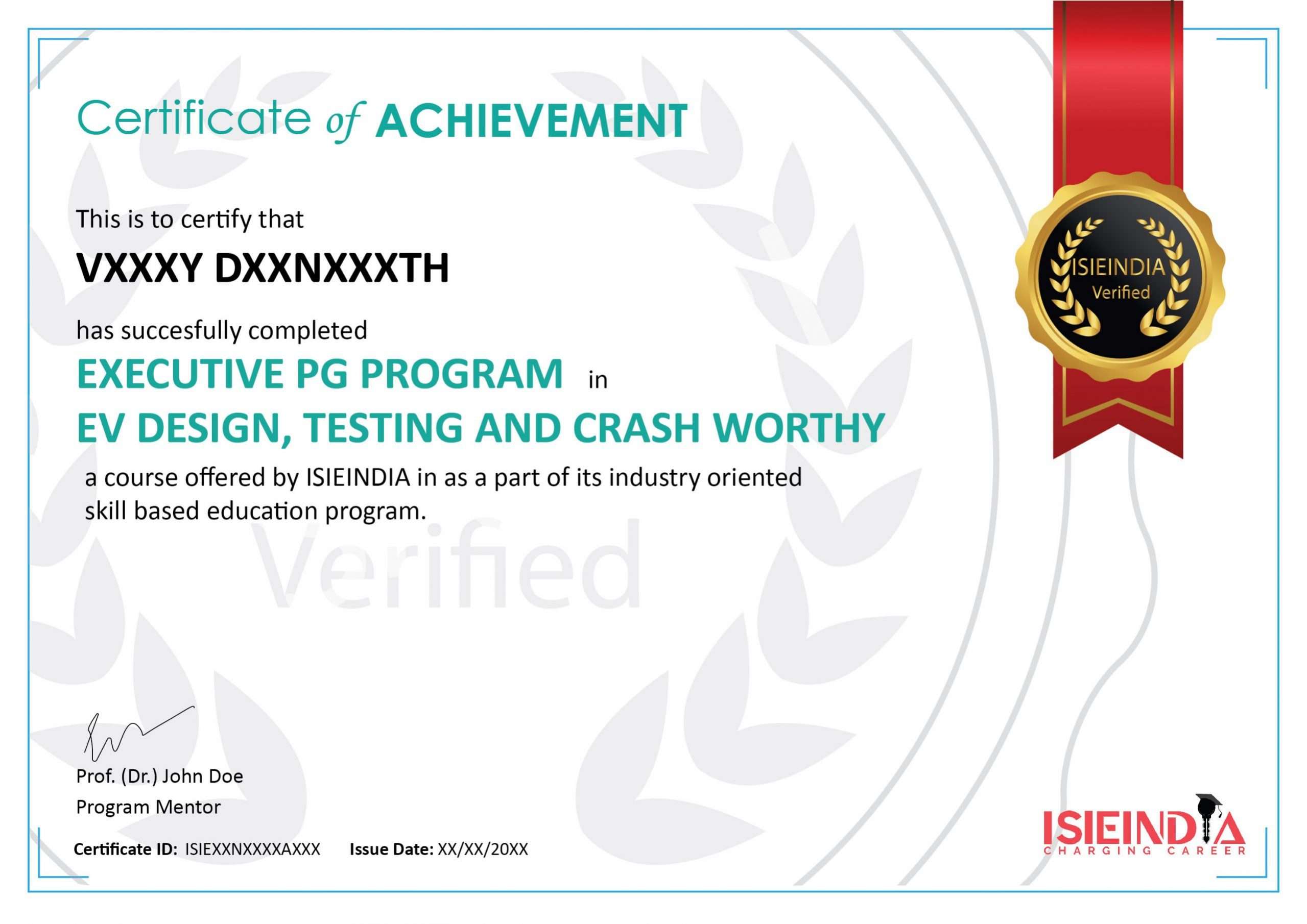
ISIEINDIA Instructors
Learn from leading Industry oriented trainer, faculty and leaders
Syllabus
Best-in-class content by leading faculty and industry leaders in the form of videos, cases and projects, assignments and live sessions
MODULE 1 - Fundamental of Electric Vehicle
60+
Content Hours Available
10+
Industry Projects
5+
Case Study
5+
Tools Covered
History of Electric Vehicles – Coming of EV in 19th Century
Golden Era of EV
Coming of New Era in EV
EV Market and Sales
Components, Trends and Growth
HEV Architecture – Parallel Hybrid
Series Hybrid
Series Parallel
Fuel Cell EV
Selection on Motors, their Size and Types – Motors
Transmissions
Hub Motor
Battery Performance Index
Introduction to Powertrain
Vehicle Coordinate System
Powertrain Equation
Aerodynamics and Its Calculation – Drag Equation
Drag Coefficient
Drag Calculation
Tire Construction and Specification
Wheel Rolling without Slipping
Wheel Dynamics ROLL vs SLIP vs SKID
Contact Patch
Hysteresis Loss
Tyre Parameters
Powertrain calculation for 2W – Calculating Parameters
Power Calculation
Motor and Torque Calculation – Torque Calculation
Gearbox Selection
Motor Characteristics
Motor Types and Design – PE and Motor Control
Basic Understanding of Motor
SRM Motor
Introduction of BLDC Motor
Control Principles
Motor for EV
Regenerative Braking
Motor Control
Motor Control Quadrant
AC Motor Control
Asynchronous vs Synchronous Motor
History of Battery-
Types of energy storage system
Why Li-Ion Cells
Battery Terminologies
Lithium Chemistry
Cell Types – Form Factors
Lithium Cell Materials
Making of Lithium Cells
Lithium Cell Failures
Future of Cell Chemistries
Understanding Cell Datasheet
Cell Operating Voltage
Cell Charge and Discharge Characteristics
IR and SOC Dependencies of Cells
Factors affecting Cell Life
Cell Degradation Causes
Life Preservation of Cell
Vehicle Energy Consumption
Battery Sizing Calculation
Cell Series and Parallel Calculation
Cell Selection
Battery Architecture
M2P vs C2P Architecture
Module Construction
Cell Packaging – Cylindrical Cells
Cell Packaging – Prismatic Cells
Cell Packaging – Pouch Cells
Cell to Pack Construction
Busbar Material and Selection
Contactor Selection
Connector Selection
What is BMS?
Basic Functionality of BMS
BMS Communication & Its Analysis
Connecting BMS to a Battery
BMS Parameter for LFP and NMC Battery
Balancing the Battery Pack
BMS Failure
BMS testing in a BMS tester
What is BTMS?
Types of BTMS
BTMS in India
Introduction to Power Electronics
Introduction to Diodes
Introduction to Transistor and its Working
Intro to Thyristor and its Working
Introduction to Rectifiers
Types of Rectifier
Uncontrolled Rectifier
Controlled Rectifier
Simulating Rectifier on Simulink
Introduction to Chopper
AC & DC Link Chopper
Boost Converter
Buck Converter
SCR Triggering Methods
Understanding of Laws
Motor & Its types
Speed Torque Characteristics of EV & ICE
Principle of Electric Machines
Back EMF and Torque of DC Machine Lecture
Introduction to EVSE
Safety of EVSE Infra
Sites & Maps
Related Technology
SAE & IEC Type 1 Connectors
IEC62196 Connector
SAEJ1172 & CCS Connectors
Introduction to Bharat AC & DC Charger
CHAdeMO Connector
Communication Protocol
Charging Methods and Algorithm
OSI Introduction
Layered Architecture 01
Layered Architecture 02
OCPP and CSMS Introduction
Benefits of OCPP
SOAP and JSON
Functions of OCPP
Charger Technologies
Intro to Power Electronics Devices
Switch Configurations
Turn Off Mechanism and Harmonics
AC Charging Levels
Intro to Charging Levels and Modes
DC Charging Levels
Charging Modes
Charging Modes Case Study
Charging Levels and Modes
Fast Charging Intro
Fast Charger Safety
DC Charging – Region wise spread
DC Connectors
Tesla Supercharger
Tesla Supercharger Billing n Connectors
Mega Chargers
Smart Grid
Definitions 01
Definitions 02
Smart Grid Features
V2G Technology
MODULE 2 - Choose your Specialisations
20+
Content Hours Available
2+
Industry Projects
1
Case Study
2+
Tools Covered
Introduction
Motor Geometry
Add Winding and Material
Simulating E Magnetics
Parameters and Drive Cycle
Setting Up Parameters
Calculation of Energy Consumption
Introduction to Battery Pack Design
Battery Case Design Principle
Battery Case Design – Model
Battery Modelling
Battery Pack Design for 2 W
Battery Pack Design for Bi Cycle
Battery Pack Design on Soft
Pack Design for 4W
Battery Testing
Introduction to Battery Pack Design
Battery Case Design Principle
Battery Case Design – Model
Battery Modelling
Battery Pack Design for 2 W
Battery Pack Design for Bi Cycle
Battery Pack Design on Soft
Pack Design for 4W
Battery Testing
BMS Selection Techniques
BMS Topologies
Communication Protocols
Power Management Considerations
60 V Battery Modeling and Cell Characteristics
Cell Balancing, Voltage Measurement, Temperature Measurement, and Current Measurement Algorithms
Simulation in MATLAB and Simulink
SoC and SoH Evaluation
Introduction to CAN Protocol
CAN Protocol Architecture
CAN Message Format
CAN Frame Types
Error Handling in CAN
CAN Bus Access Control
CAN Applications and Implementations
Advanced Topics and Future Trends
ADAS features overview
Autonomy Levels
ISO26262 Functional Safety Levels
Ultrasonic , RADAR, LIDAR, Camera,GPS sensor working principles
Significance of Sensor Fusion and few examples in ADAS features
Kalman filters
AUTOMOTIVE Communication protocols
Automotive V cycle process
AUTOSAR Basics
Artificial Intelligence
Introduction to Autonomous Vehicle
Autonomous Technologies
Introduction and Understanding of IoT
Introduction to IoT Platforms
Working with Sensors
IoT in Electrical Vehicles
Introduction to Embedded Systems
Mathematical Model Building
Micro Controller
Python
Basics of CAD Modelling & Animation
CAD Assembly Design
Advance CAD
Introduction to ANSYS
Meshing
Structural Simulation
Thermal Simulation
Basics of HyperMesh
3D Meshing
Analysis
Introduction to LS-DYNA
Vehicle Crash-worthiness
Seat belt analysis
Luggage Retention and H1H2 Tests in Seat
Head Impact Analysis
Aerodynamics of Vehicle Design
Calculating Frontal Area
Drag Calculation
EV Design Changes
Introduction to Design
Chassis
BIW
Software Interface
Hood Design
Roof design
Drawing
General Requirements for Electrical Safety-Related Work Practices
Establishing An Electrically Safe Work Condition
Safety-Related Work Practices
De-Energizing
Test Instruments and Equipment for Electric Vehicle Applications
Admission Details
Candidates can apply to this Executive PG Program in Electric Vehicle Technology certification program in 3 steps. Selected candidates receive an offer of admission, which is accepted by admission fee payment.
STEP 2

Application Review
An admission panel will shortlist candidates based on their application
STEP 3

Admission
Selected candidates can start the Executive PG program within
1-2 weeks
Admission Fee & Financing
The admission fee for this Executive PG Program in Electric Vehicle Technology is ₹ 99,999 (Incl. taxes). This fee covers applicable program charges and NSDC Certification.
Financing Options
We are dedicated to making our programs accessible. We are committed to helping you find a way to budget for this program and offer a variety of financing options to make it more economical.
No Cost EMI
We have partnered with the following financing
companies to provide competitive finance options
at 0% interest rate with no hidden costs.

Financing as low as
₹ 3,333/month* for basic Course
+
₹ 833/month* for per Specialization
Other Financing Options
We provide the following options for one-time payment

Internet
Banking

Credit/Debit
Card








